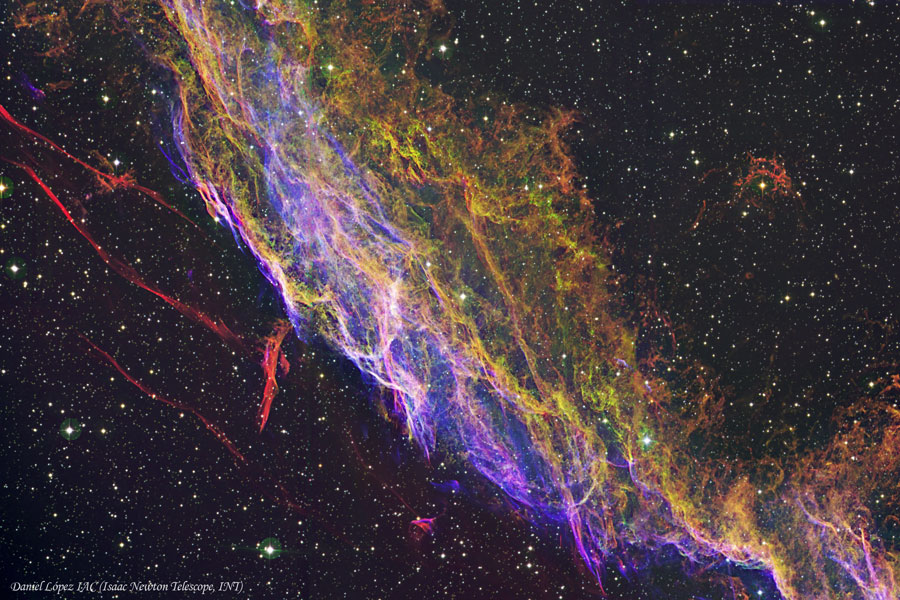DECEMBER 1, 2009
NGC 6992: Filaments of the Veil Nebula
EXPLANATION
Wisps like this are all that remain visible of a Milky Way star. About 7,500 years ago that star exploded in a supernova leaving the Veil Nebula, also known as the Cygnus Loop. At the time, the expanding cloud was likely as bright as a crescent Moon, remaining visible for weeks to people living at the dawn of recorded history. Today, the resulting supernova remnant has faded and is now visible only through a small telescope directed toward the constellation of the Swan (Cygnus). The remaining Veil Nebula is physically huge, however, and even though it lies about 1,400 light-years distant, it covers over five times the size of the full Moon. In images of the complete Veil Nebula, studious readers should be able to identify the above filaments on the lower left. The above image is a mosaic from the 2.5-meter Isaac Newton Telescope at Roque de los Muchachos Observatory in the Canary Islands.
Credit & Copyright


